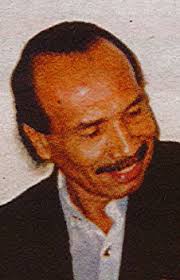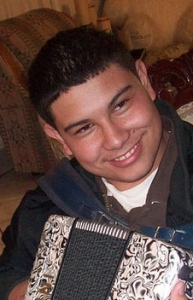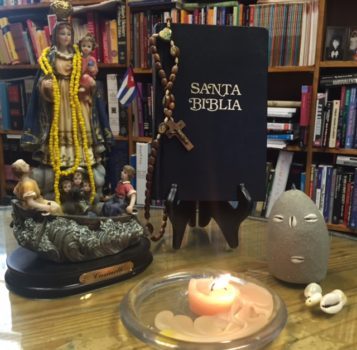Yes – black lives matter. But for centuries they haven’t. Killing black folk was considered sport, as documented by early twentieth century souvenir postcards of lynchings, where good Christians looked into the camera as that “strange fruit” swung from the trees behind them. The police, with a history to “protect and serve” whites from the menace of blacks, could always kill blacks with impunity. Black lives never mattered in this country, nor do they now – a point made clear as I read of the latest young black man shot in the back by law enforcers who feared for their lives. I believe that it is probably safer for a black man to be in a combat zone in whatever war we are currently engaged, than to be stopped by the police in this country. Because black lives matter, I totally support as an ally, in word and deed, this grassroots movement.
But whites want to create a counternarrative – all lives matter. This disingenuous attempt to diminish the revolutionary cry for justice masks the height of the dominant culture’s hypocrisy. If indeed, all lives mattered, then those who benefit from the prevailing social structures would have been at the forefront in dismantling the human rights violations committed against blacks before Trayvon Martin’s life was ever threatened for the suspicious act of wearing a hoodie and carrying a box of Skittles, a site that strikes fear, according to presidential candidate Hilary Clinton, for open-minded white people. The current social structures are undergirded with the recognition that only white lives matter. And while only the idea that white lives matter has been normalized and legitimized, it has become politically correct, within the racist colorblind motif, to argue with righteous indignation that all lives matter. Yes, all lives matter, but for now, the focus is on black lives.
And yet, as I observe the black lives matter movement, I am struck by the absence of brown lives’ participation. Our absence is deafening, even as it continues to be ignored. What does it mean to be brown while black lives matter? I do not want to fall into the trap of diminishing the importance of the movement, as in the case of whites insisting that all lives matter. But I also feel uncomfortable in the continuous black/white dichotomy that has predominately shaped the discourse of U.S. conversations concerning race, and which continues to ignore the largest minority group in the U.S. who, thanks to our immigration laws, now also represents the largest group in federal prisons. On a side note, I can’t help but wonder if the reduction of federal prison sentencing to counteract the 1980s tough-on-crime hysteria is just an attempt to make more room for more brown bodies.
How then, do I stand in solidarity with the black lives matter movement without ignoring that brown lives matter too? While I read of blacks being killed by law enforcement, brown lives barely make the news. One is hard pressed to find media coverage concerning the 28 killings of undocumented immigrants by border patrol agents between 2010 and 2014. Patrol agents have kidnapped and raped the undocumented, including brown girls as young as 14 years old. Agents have beaten unarmed brown men to death. Undocumented federal prisoners have been killed while incarcerated, either at the hands of prison guards or through the denial of life saving medicine. Boys have been shot while in Mexico by border patrol agents on the other side of the wall who justified using deadly force with the excuse that they feared for their lives. And every four days, five brown undocumented lives are lost while crossing the desert.

Roberto Pérez Pérez – Age 63; died while in U.S. detention for lack of medical care after being beaten by guards
While in custody, several face unnecessary abuse, as was the case with a 27 year-old Guatemalan named Jorge. For ten years he has lived in Santa Monica California and was making his way back to his family. Interviewed by the organization No More Deaths, Jorge shared a familiar story that unfortunately is not the exception, but the norm. In fact, over a two-year period, No More Deaths documented over 32,075 incidents of abuse during short-term Border Patrol detention. Jorge, along with nine other migrants, were walking the trails of southern Arizona when Border Patrol agents on motorcycles and horses surrounded them. He was thrown to the ground face first and hit with the butt of a gun while agents hurled insults. For three days he was held at the Tucson processing center where requests to see a doctor for the injuries attained during his arrest were ignored. The food he was carrying (along with $100 U.S. and a birth certificate) were confiscated and never returned. He was only given saltine crackers (after days in a desert which contributed to dehydration) during his incarceration. The border Patrol also confiscated his clothes, except for a t-shirt and pants, and then turned on the air conditioning at full blast. Today Jorge suffers from chronic stomach pains resulting from days without eating.
Jorge’s life matters, brown lives matter. But how do I make this case without taking away from the importance of black lives? And as I say that brown ignored lives matter, I am keenly aware of the other lives of color, and the trans lives that are also being taken. Maybe the real question is why must it be an either/or? According to most demographic studies, whites will represent less than 50 percent of the U.S. population by 2042. In many of our metropolitan cities today, and in several states, whites already represent the minority population. This means that in most urban and industrial centers, where communities of color are predominant, the essential American perspective IS of color. But as U.S. demographics change to the detriment of whites, how is the whiteness of economic, social, and political power fortified? What will a future minority white apartheid America look like? The answer is as old as political maneuvering: divide and conquer. As long as communities of color fail to build the necessary coalitions to combat the prevailing reality that all nonwhite and nonstraight lives live in peril, the social structures protecting white privilege will remain intact. Yes, some politically correct cosmetic changes might occur, but over all, the structures that privileges one group over and against another group will continue unabated.
And while it is easy to simply blame whites for just being whites who, for the most part, ignore what it means to be of color today in America by insisting that all lives matter, communities of color must wrestle with their own complicity. Communities of color are partially at fault for accepting a zero-sum mentality that assumes any advances made by one marginalized group is at the expense of other marginalized communities. Like a four-leaf clover, our separate racially or ethnically distinct cul-de-sacs operate side-by-side with few of us ever venturing into the adjoining community. Solidarity may occur from time to time, but it usually happens with little long-lasting effects. More disturbing is when communities of color are oblivious to how they are locked into structures that cause oppression to other communities of color. How is white racism and ethnic discrimination different from the racist and ethnically insensitive comments emulating from our own communities of color? For example, when black leader Al Sharpton fails to recognize that Puerto Ricans are U.S. citizens. If many of us are content to remain within our own racial or ethnic niche, how can we, then, with any integrity, hold whites to task for not engaging in the liberation of our own community, when we too seldom accompany our neighbors in the adjacent cul-de-sac?

Guillermo Arévalo Pedroza – Age 36; Killed while at a barbecue in a Mexican Park with wife & daughters by Border agent in the U.S.
Neither black lives nor brown lives will succeed in the crucial work of dismantling the racist and ethnic discriminative institutionalized structures undergirding law enforcement until brown folk stand in solidarity at Ferguson, and black folk stand in solidarity on the border. Fighting with each other for the crumbs that fall from the master’s table only reinforces our subservience and focuses our energies against those who are more our allies than our competitors. I refuse to enter meaningless debates as to who has suffered more in this country, blacks or browns. It’s not a numbers game, for if just one black or brown life is lost due to institutionalize violence, then that is one life too many, and all our resources must be committed to fight full force to prevent the death of another life, regardless of skin pigmentation. “Black lives matters” must continue. “Brown lives matters” must develop further. And just as important, black lives and brown lives must begin a conversation and strategize together for the liberation of all lives from oppressive law enforcement structures that, ironically, see no difference between blacks or browns.
First Published in Our Lucha









